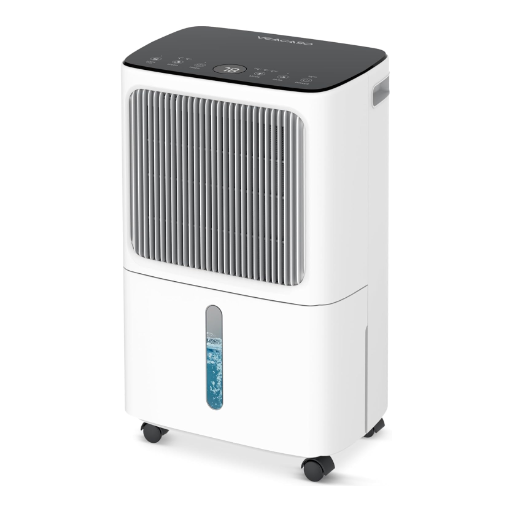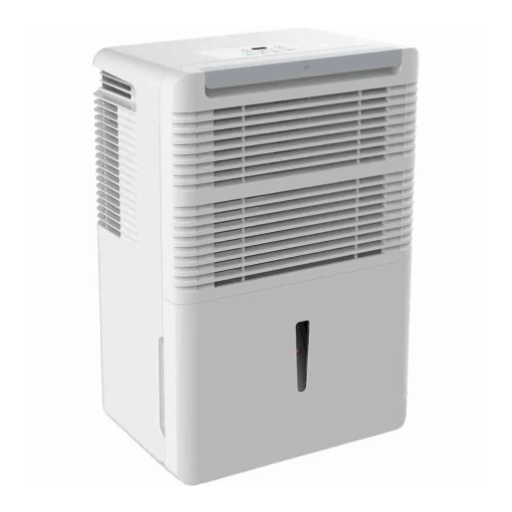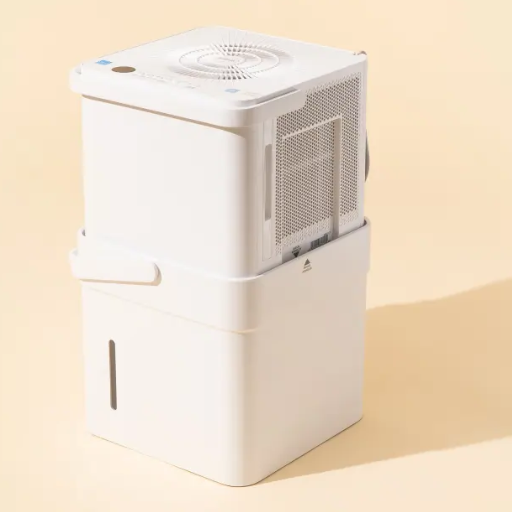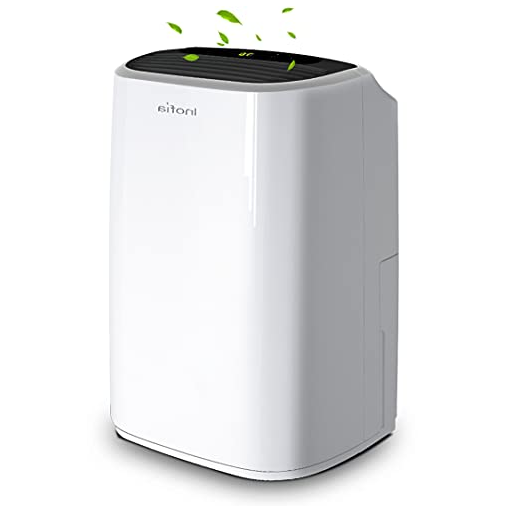If you’ve ever experienced a sweltering, sticky summer day, you know how humidity can make a room feel hotter than it truly is. While air conditioners are often the go-to solution, dehumidifiers are another popular tool for improving indoor comfort. But can a dehumidifier cool a room? This article dives into the science behind how dehumidifiers work, explaining their role in reducing humidity and their impact on perceived temperature. Whether you’re looking to enhance your home’s comfort, save on energy bills, or simply understand more about your appliances, this guide will help shed light on the often-overlooked benefits of dehumidifiers.
What is a Dehumidifier?

Definition and Purpose of a Dehumidifier
A dehumidifier is a specialized device that removes excess moisture from indoor air, creating a more comfortable and healthier living environment. The main function is to maintain optimal humidity levels inside rooms, which increases comfort for inhabitants while preventing issues associated with high humidity.
Key Benefits: High humidity levels can promote allergens, bacteria, and mildew growth. By reducing humidity, dehumidifiers preserve structural integrity, protect furniture, and improve air quality.
Dehumidifiers are essential for:
- Areas that experience periods of high humidity
- Rooms prone to dampness (basements, bathrooms)
- Preventing mold and mildew growth
- Reducing air conditioning usage and energy costs
- Minimizing health issues related to excessive humidity
How Dehumidifiers Work
Dehumidifiers operate through a straightforward process:
- Air Intake: A fan draws in moist air from the room
- Moisture Removal: Air passes over cold coils or surfaces, causing moisture to condense
- Water Collection: Condensed water is collected in a reservoir or drained through a hose
- Dry Air Release: Drier air is released back into the environment
Most dehumidifiers include sensors that measure humidity levels, allowing users to set their ideal humidity level for automatic maintenance. This ensures the air doesn’t become overly dry, which could create another source of discomfort.
Types of Dehumidifiers Available
| Type | Best For | Key Features | Ideal Conditions |
|---|---|---|---|
| Refrigerant Dehumidifiers | Warmer, humid conditions | Uses refrigerated coils to condense moisture | Residential basements, living areas |
| Desiccant Dehumidifiers | Cool climates | Lightweight, quieter operation | Unheated spaces like garages |
| Whole-House Dehumidifiers | Entire home systems | Integrated with HVAC systems | Persistent humidity problems |
| Portable Dehumidifiers | Single rooms or small areas | Compact, economical, moveable | Temporary or localized use |
Can Dehumidifiers Cool a Room?
Scientific Principles Behind Dehumidification
The scientific principle behind dehumidification is condensation. Here’s how it works:
- Warm, humid air enters the dehumidifier
- Air passes over cool coils, lowering its temperature
- Water vapor condenses and drips into a reservoir
- Drier air is reheated and released back into the room
Important Note: Modern energy-efficient dehumidifiers are rated in pints of water removed per day. Higher humidity levels allow these units to remove more moisture, creating a more comfortable environment.
Limitations of Dehumidifiers as Cooling Solutions
While dehumidifiers provide comfort benefits, they have several limitations as cooling devices:
- No Direct Cooling: Dehumidifiers don’t cool the air temperature
- Heat Production: Some models produce heat during operation, potentially warming smaller spaces
- Energy Consumption: Large capacity units running continuously can increase electricity bills
- Limited Effectiveness: In extreme heat, dehumidifiers alone cannot provide adequate cooling
Comparison with Air Conditioning Systems
| Feature | Dehumidifier | Air Conditioner |
|---|---|---|
| Primary Function | Removes moisture from air | Lowers temperature and humidity |
| Energy Consumption | 300-700 watts per hour | 3,000-5,000 watts per hour |
| Cooling Effect | Makes the air feel cooler | Reduces temperature |
| Air Quality Features | Prevents mold and mildew | Often includes air filtration |
| Best Use Case | Humidity control | Temperature control in hot climates |
Benefits of Using a Dehumidifier

Improving Air Quality and Humidity Control
Dehumidifiers play a crucial role in maintaining healthy indoor air by controlling humidity and reducing moisture-related risks:
- Allergen Reduction: Prevents the growth of molds, mildew, and dust mites
- Respiratory Health: Reduces allergens that can cause respiratory problems
- Structural Protection: Prevents warped wood, peeling paint, and rusty metals
- Energy Efficiency: Helps HVAC systems work more efficiently
Optimal Humidity Range: Maintain indoor humidity levels between 30-50% for maximum comfort and health benefits.
Preventing Mold Growth and Allergens
Effective mold and allergen control strategies include:
- Humidity Control: Maintain 30-50% relative humidity
- Regular Cleaning: Use HEPA filter vacuums for carpets and upholstery
- Hot Water Washing: Wash bedding in hot water to eliminate dust mites
- Air Purification: Use air purifiers to capture airborne particles
- Proper Ventilation: Operate exhaust fans in bathrooms and kitchens
Creating a Healthier Indoor Environment
A comprehensive approach to indoor air quality includes:
- Pollutant Control: Regular cleaning and HEPA filtration
- Humidity Management: Use dehumidifiers in damp areas
- VOC Reduction: Choose natural, non-toxic cleaning products
- Plant Integration: Add houseplants that filter air pollutants
- Proper Ventilation: Ensure adequate air circulation
Common Misconceptions About Dehumidifiers

Do Dehumidifiers Replace Air Conditioners?
Answer: No, dehumidifiers cannot adequately replace air conditioners as they serve different functions.
Key Differences:
- Air Conditioners: Cool rooms by removing heat and circulating conditioned air
- Dehumidifiers: Reduce humidity by extracting moisture from air
- Best Practice: Use both appliances together for optimal comfort in hot, humid conditions
Can a Dehumidifier Directly Lower Room Temperature?
The Reality: Dehumidifiers do not directly decrease room temperature. They remove moisture, which can make air feel less sticky and more comfortable, but actual temperature (in degrees Fahrenheit or Celsius) rarely decreases.
The “Cooling” Effect Explained:
- High humidity prevents efficient sweat evaporation
- Dehumidifiers remove excess moisture, promoting natural cooling
- The result is perceived comfort, not actual temperature reduction
Understanding the Role of Humidity in Comfort Levels
Humidity significantly affects indoor comfort by influencing how temperature is perceived:
- High Humidity: Slow sweat evaporation makes people feel warmer
- Low Humidity: Can cause sinus irritation and dry skin
- Optimal Range: 30-50% relative humidity provides maximum comfort
How to Choose the Right Dehumidifier

Factors to Consider: Room Size and Humidity Levels
| Room Type | Recommended Capacity | Special Features |
|---|---|---|
| Small rooms (bathrooms, closets) | 20-30 pints per day | Compact design |
| Large areas (basements, living rooms) | 50-70 pints per day | Heavy-duty performance |
| High moisture areas | 70+ pints per day | Continuous drainage, built-in pump |
| Seasonal use | 30-50 pints per day | Defrosting feature |
Energy Efficiency and Cost Considerations
Energy Efficiency Features to Look For:
- Energy Star certification (15% less energy consumption)
- Adjustable humidity levels
- Auto shutoff functionality
- Eco mode for reduced power consumption
- Wi-Fi connectivity for real-time monitoring
Cost Analysis Tips:
- Consider both purchase price and operating costs
- Higher capacity units may be more energy-efficient long term
- Monitor energy consumption through smart technology
- Time operations based on electricity rates
Frequently Asked Questions (FAQ)
References
- Improving the Energy Efficiency of Dehumidification Technology at Large Facilities Located in Florida – Discusses the efficiency of dehumidification processes and their cooling effects
- Optimizing Energy Efficiency and Improved Dehumidification Performance of Variable-Capacity Air Conditioning Units – Analyzes dehumidifying and cooling performance of AC systems
- Energy-Efficient Management of Mechanical Ventilation and Relative Humidity for Hot-Humid Climates – Highlights dehumidifiers’ role in controlling indoor air humidity
- Coupling Active Heat Exchange and Vacuum Membrane-Based Air Dehumidification for High-Efficiency Air Conditioning – Discusses emerging dehumidification technology
- Computer Room Fresh Air Cooling – Examines dehumidification load and room cooling in specialized environments




